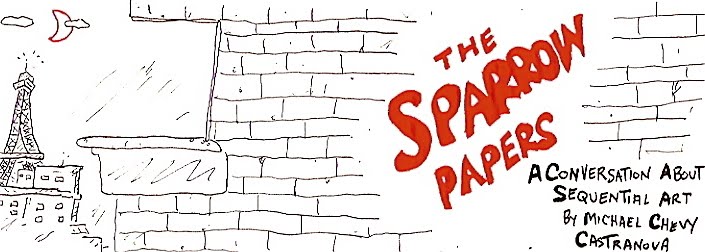 In a post way back in April, on In the Studio: Visits With Contemporary Cartoonists, I noted Chris Ware’s comment about how comics could have evolved using single-scene tableaus, rather than imitating motion picture camera techniques.
In a post way back in April, on In the Studio: Visits With Contemporary Cartoonists, I noted Chris Ware’s comment about how comics could have evolved using single-scene tableaus, rather than imitating motion picture camera techniques. “This is the course comics should’ve taken before they got sidetracked and transformed by the language of cinema in the 1930s,” Ware said, speaking appreciatively of the work of Japanese cartoonist Suiho Tagawa.
If anyone is to blame — if blame is the right word — for comics’ path of movie-like perspectives, that would be Milton Caniff. His Terry and the Pirates — as with his pal Noel Sickles’s Scorchy Smith — for the first time employed close-ups, overhead angles and other dramatic viewpoints not seen before in the newspaper strips of the 1930s.
In Meanwhile …: A Biography of Milton Caniff, Robert C. Harvey tells how Caniff developed this camera-lens eye. As a child in California, where he spent part of youth when not in Ohio, he hung around the fledgling movie industry, out in the dusty California desert. Often he was picked as an extra in the seat-of-their-pants productions.
That's what first gave him a taste for the cinematic.
You can read my first post on this book here.

No comments:
Post a Comment